It boasts 2200 lumens, accurate color covering 96% of the Rec.709 standard, a 1.2x zoom with the ability to project a 100” image from just over nine feet away, and 3D support. With a single built-in speaker and wall color compensation, you can set it up just about anywhere for no-hassle jumbo-screen entertainment, or use it to anchor a budget home theater. The lens delivers high clarity and a single-chip DLP light engine offers rich color and solid motion processing. At $649, it’s hard to imagine a better value in front projection. In BenQ’s own words, “CinematicColor™ technology utilizes optimal colors to bring out accurate and enhanced images. CinematicColor’s Rec.709 HDTV color coverage, 6X speed RGBRGB color wheel, and high native ANSI contrast ratio ensure incredible image performance delivering detailed, sharp and crisp visuals.” It’s a promise that I’m confident they’ll deliver on. Let’s take a look.
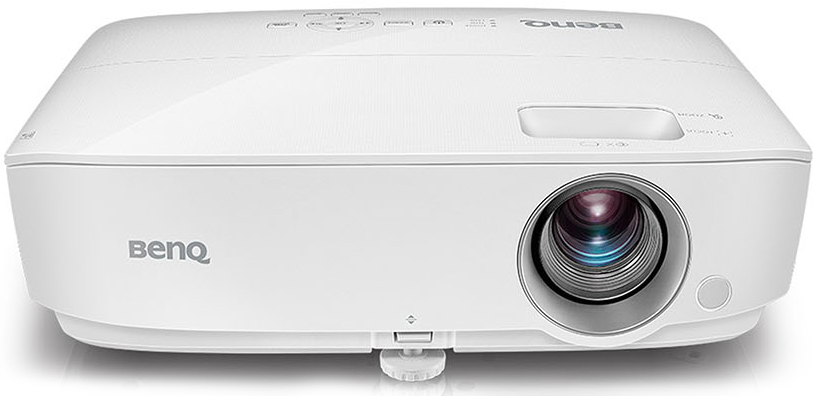
BenQ HT1070A 3D DLP Projector
- 2200 lumens output from a 210-watt lamp
- Single-chip DLP delivers high clarity through a quality lens
- 6x speed RGBRGB color wheel
- Good out-of-box color accuracy improves with calibration
- 3D support
- Built-in speaker
- Easy installation with good zoom range, adjustable feet, and keystone correction
BenQ has impressed me so many times lately, it’s almost become boring. I can always count on them to provide amazing performance for very little money, like cheap flat-panel money; like, this projector costs less than most 50” TVs. Today, I have the all-new HT1070A in my theater for testing and enjoyment. It shares its compact size with the now-discontinued HT1070 which I reviewed earlier this year. The rest of the package however, is new. Light output is up to 2200 lumens versus the previous model’s 2000. And the price has dropped $50. Most other specs are either exactly or nearly the same. You still get a lightweight, portable display that can be set up in moments for big-screen fun. Or make it the centerpiece of a budget home theater or media room. With plenty of output, it works equally well in a light-controlled space, or a multi-use environment with some ambient light present. 3D fans who are feeling abandoned by flat-panel manufacturers will enjoy the HT1070A’s support for all formats and its non-existent crosstalk. That, coupled with the superior motion processing inherent to DLP projectors, makes for a 3D experience second to none.
Type:
Single-chip DLP
Color wheel:
6x, RGBRGB
Native resolution:
1920×1080
3D:
Frame pack, top/bottom, side-to-side
Throw ratio:
1.28-1.56
Lens offset:
107%
Lens shift:
No
Maximum image size:
300”
Anamorphic lens support:
No
Auto-iris:
No
Bulb output modulation:
Yes
Light output (mfr):
2200 lumens
Bulb power:
210w
Fan noise:
33/31dB
Video connections:
2 x HDMI, 1 x VGA, 1 x composite
Audio:
1 x 3.5mm in, 1 x 3.5mm out
Speaker:
1 x 2w
Additional connections:
1 x USB, 1 x RS-232
Lamp service life:
4500/6000/10,000 hours
Dimensions:
13" x 3.9" x 9.5” (WxHxD)
Weight:
5.65lbs
Warranty:
One year, 90 days or 500 hours on lamp
Price:
$649
Company:
SECRETS Tags:
BenQ HT1070A 3D DLP Projector, DLP Projector, 3D Projector, BenQ, Projector Reviews 2017
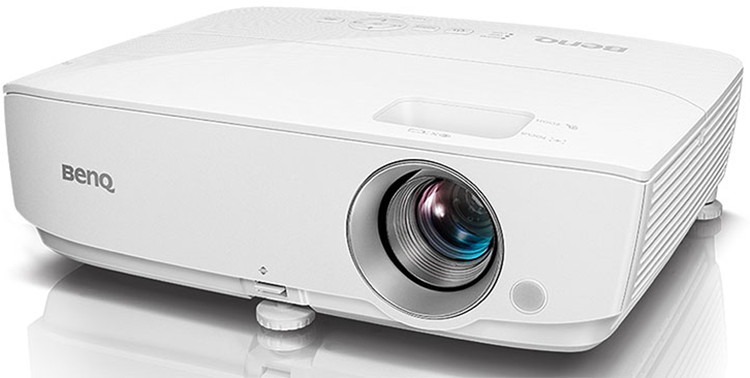
So, up front, I won’t get into a lot of detail comparing the HT1070A with the HT1070. The two projectors are nearly identical in every way that counts. The old model is now discontinued and the new one costs $50 less than before, score. I’m not sure there’s a compelling reason to replace the old with the new but if you’re in the market for a budget display, the 1070A delivers solidly on all points.
The light engine is a single-chip DLP with a 210-watt lamp. The fan is quiet, even on the higher-brightness Normal mode where it’s just 33dB. Service life is rated at up to 10,000 hours if you use the SmartEco setting which modulates output based on content. It’s a decent replacement for an auto-iris, and BenQ has refined this feature to the point where all you notice is increased contrast. Brightness pumping is a thing of the past. The chassis is compact and light with generous ventilation on the sides. Some light leakage is present but not enough to distract, even in a completely-dark environment.
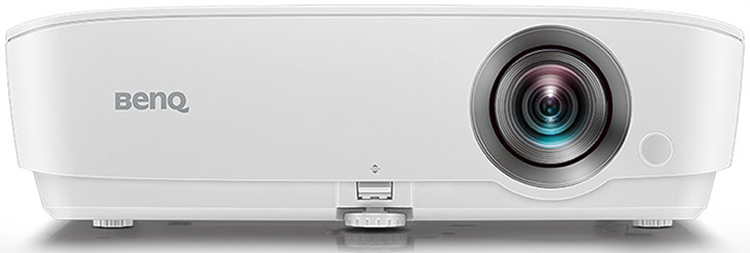
The lens is offset to one side and recessed. It’s unlikely to suffer damage when bagged up but BenQ might consider including a dust cover anyway. The only other feature up front is a single, large extendable foot. Press a button and it pops out to raise the lens upward. You’ll have to dial in keystone correction, which can be set automatically. It gives the user more installation flexibility but use it sparingly as it will reduce resolution. If you keep the projector level, the lens offset is 7% from the edge of the screen. The menu accommodates table or ceiling mount options.
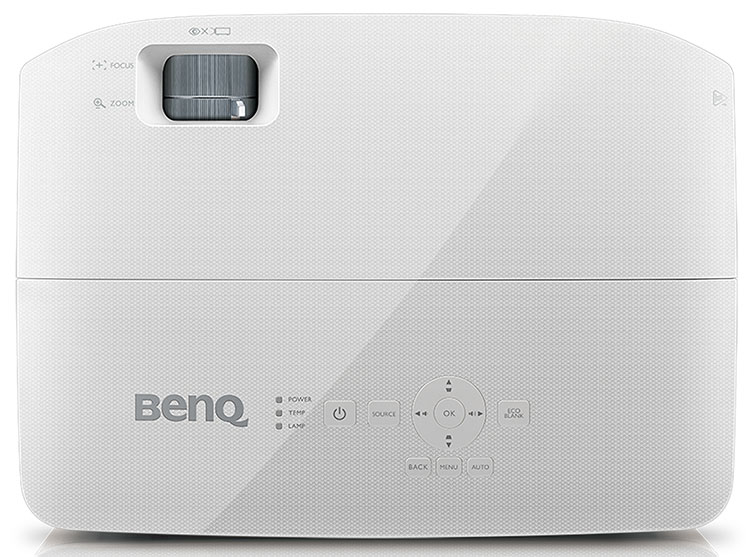
Up top, you’ll find the manual lens controls for focus and zoom. They are precise and well-damped, and stay in place once you’ve dialed in the image geometry. Also here is a set of control keys for menu navigation, source selection, volume level, and keystone correction. The surface is finished in a light-absorbing texture.

Rear panel connections include two HDMI ports, VGA, composite video, 3.5mm audio in & out, RS-232, and USB-mini. The VGA port will accommodate a component breakout cable if you need that three-wire interface.
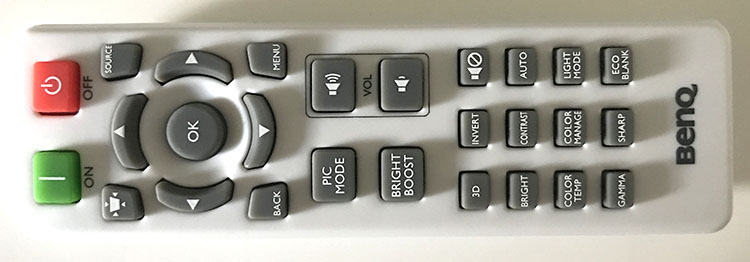
The HT1070A’s remote is one of the smallest handsets I’ve ever seen. It isn’t backlit but most of the keys are differently-shaped making the learning process quick. In addition to discrete power keys, you get menu navigation and one-button access to most image adjustment parameters along with volume up & down. Despite its cuteness, it sends out a strong IR signal that can be bounced from the screen or even a side wall. Sensors are found on the front and back of the chassis.
3D is fully-supported here via DLP-Link. You can buy BenQ’s glasses or use a generic pair like those made by Xpand. I’ll detail my experiences in the Watching and Benchmark sections but in summary, the HT1070A does excellent 3D thanks to reasonable light output, almost zero crosstalk, and superb DLP motion processing.
With its fixed lens offset, I set up the HT1070A on a small stand in front of my seating with the axis a few inches below the bottom edge of my Stewart Filmscreen Luminesse. I zoomed the image up to a full 92” diagonal and set focus using a variety of test patterns. Ultimately, I achieved a very clear picture with little effort. Connections were made through the HDMI ports for both pattern generation and Blu-ray viewing.
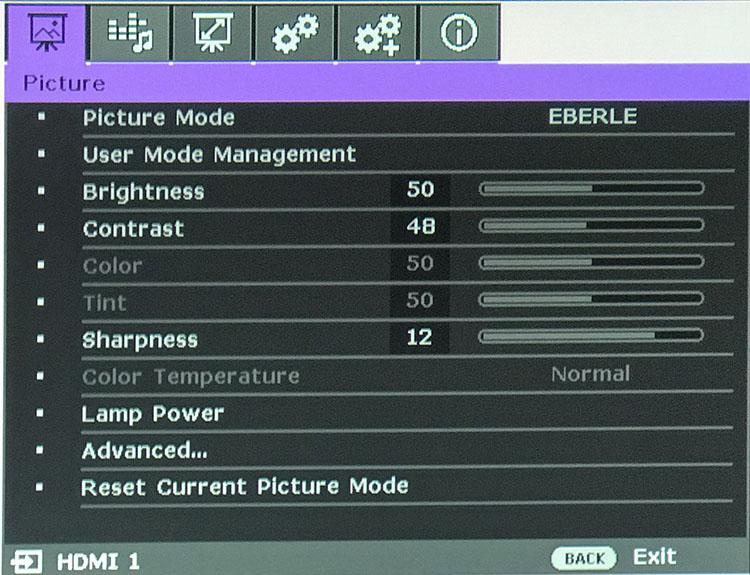
The OSD is divided into six sub-menus and the one you’ll be using most is Picture. For users who don’t wish to tweak, the menu system can be set to a basic mode which removes most of the options from view. There are four presets, two of which take output to over 80 foot-Lamberts. For the most accurate color, choose Cinema. Or you can set up the two User modes, based on any of the presets, to your liking.
With no adjustment, the HT1070A offers decent accuracy and is perfectly watchable with no further intervention. There are Economic and Normal lamp modes but I suggest going for SmartEco. This one acts like an auto-iris, throttling output to improve contrast. My tests showed a 50% increase in dynamic range. If you choose to calibrate, use Economic to make your settings, then switch over.
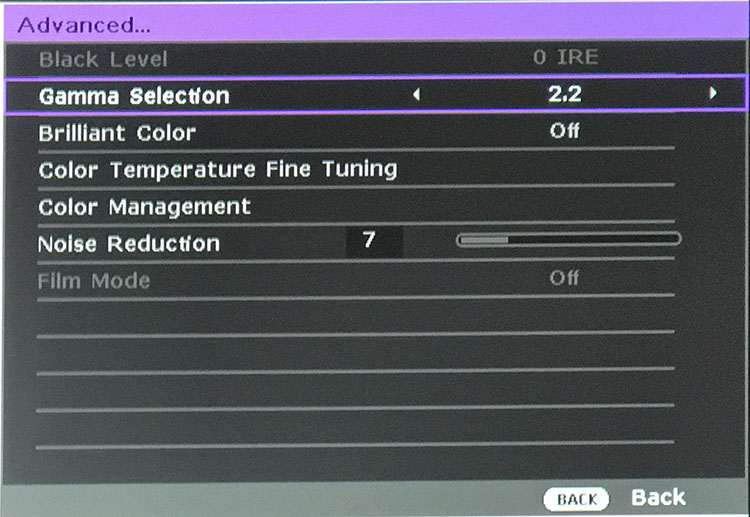
Advanced options include 10 gamma presets ranging from 1.6 to 2.8. Measurements show that they all match up to their labels so if you set 2.2, you get 2.2. You also get Brilliant Color which adds a little punch to the picture at the expense of ultimate accuracy. I preferred to leave this one turned off. Color temp can be tweaked with a precise two-point control and full color management is available with hue, saturation, and luminance adjustments.
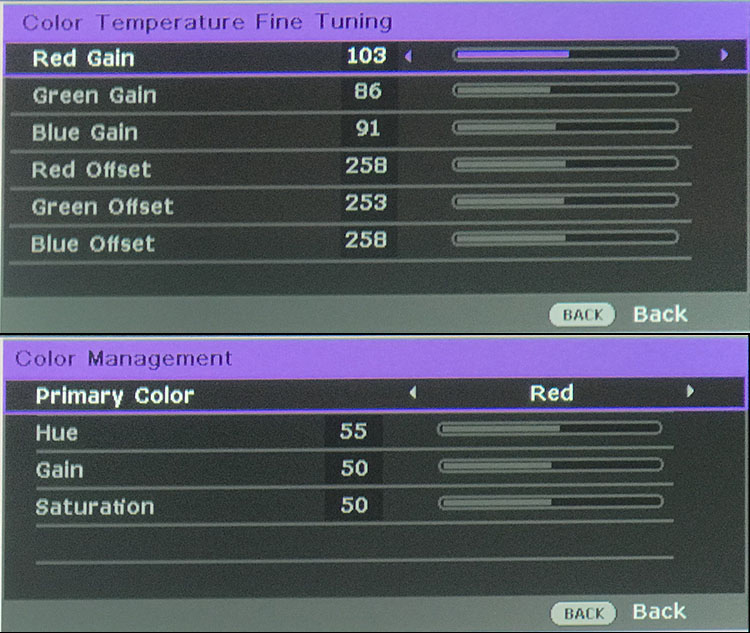
When calibrating, I found I only needed to adjust the gain and bias sliders to improve grayscale. This change improved color accuracy as well though there were small errors in the blue primary I could not fix. It’s far from a deal-breaker though. The HT1070A’s image is excellent both before and after adjustment. After finishing my setup, I set the bulb to SmartEco and sat down for an afternoon of movie-watching.

With the impending release of War for the Planet of the Apes, I thought it would be good to reacquaint myself with the franchise and watch Dawn of the Planet of the Apes from 2014. This film is a CGI masterpiece with the most amazing portrayal of living creatures I’ve ever seen. Every ape is a computer construct born of motion-capture suits worn by human actors. A good display will show tremendous detail, right down to the hair and dander on Caesar’s head. The HT1070A had no trouble delivering. Movies like this are a showpiece for DLP technology. To experience a similar level of sharpness requires a very capable LCD or LCoS projector, one that likely costs more than this BenQ. To see such quality in a $649 display is impressive.
Secrets Sponsor
I thought Wonder Woman deserved another viewing as it is one of the best comic-book superhero flicks ever. I took particular note of the gala scene in chapter nine. Most of the movie is presented in a cold, dark color palette but this sequence is warm and inviting. I saw a few instances of gray shadows that should have been more black but excellent color saturation quickly distracted me. The bright blue of Diana’s dress pops out against an array of red and orange hues and elevates her to the foreground as she strides through the room. Fast-paced action looks equally tasty with high resolution and no smearing or blur.
I don’t often watch animated films for reviews because they make nearly any display look good, but I couldn’t resist a screening of Wreck-It Ralph. There is so much rich, saturated color that you can almost taste the candies and cakes in the Sugar Rush game. Closeup shots reveal detailed textures and subtle shading without banding or other artifacts. Depth and dimension are as good as I’ve seen on any projector, regardless of cost.
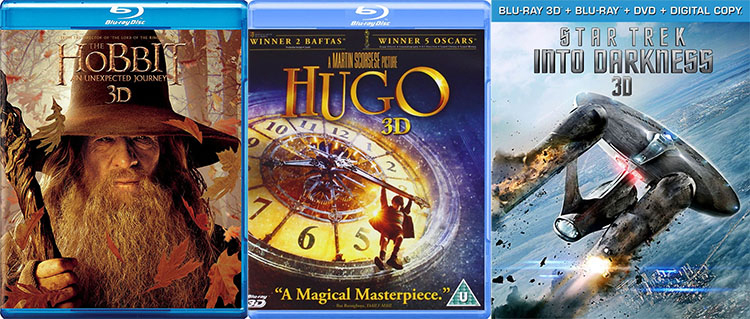
I always spend some time with my small but enjoyable 3D Blu-ray collection whenever a DLP projector comes to my theater. It always provides a deeper and cleaner effect that frequently transcends ultimate light output. The latest displays have zero crosstalk which just heightens the sense of reality even more. I started with The Hobbit, An Unexpected Journey. Like most modern movies, it is a conversion, originally shot on 2D cameras. As such, some scenes can look a little toy-like, but this is a function of the film’s creation, not the display it’s shown on. The HT1070A faithfully reproduces what you feed it. Happily, I was able to create a custom calibration for the 3D mode which livened up the color a bit. By default, it looks a little too cool and flat. Detail and motion processing were first-rate as expected.
Secrets Sponsor
I also watched Hugo, which by now has become extremely familiar. The color gold is predominant throughout and the HT1070A effortlessly reproduced this difficult hue. It’s not enough to create a rich yellow, the metallic edge must shine through, and it does here. Many opportunities are taken to use the 3D effect with objects flying in and out of the frame, and at the viewer. I enjoyed every instance thoroughly.
There is no better test of a projector’s ability to show red than the opening of Star Trek Into Darkness. The shades found in Nibiru’s flora and fauna are found nowhere else in the universe, at least in my experience. Kirk and McCoy’s chase through the forest looked larger than life as they dodged arrows and spears, some of which actually made me duck. And Spock’s brush with death in the volcano had me on the edge of me seat even though I knew the outcome.
To test the HT1070A’s color accuracy, I used an X-Rite i1 Pro Spectrophotometer facing the projector’s lens and fitted with its diffuser attachment. Luminance readings were taken with a Spectracal C6 tri-stimulus colorimeter facing a 92” diagonal Stewart Filmscreen Luminesse with Studiotek 130 material, gain 1.3, at a 10-foot distance. Patterns were generated by an Accupel DVG-5000 and controlled with CalMAN, version 5.7.

Like most of the BenQ projectors I’ve reviewed of late, Cinema is clearly the best starting point for calibration. The Brilliant Color option is turned off in this mode and my measurements confirm that’s the best choice. In the past, this feature sometimes improved accuracy; and on the HT1070A, it will add a bit of pop to the image. But it skews grayscale and gamma noticeably and requires a lot of adjustment to correct. Without it, the average grayscale error is just 3.3793dE and gamma tracks almost perfectly. The upper brightness steps lack a bit of warmth but one could happily use the projector without calibration.
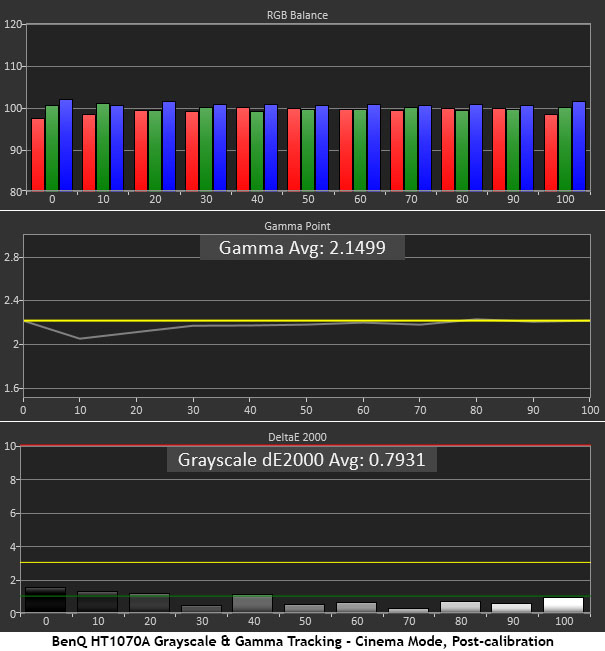
A few tweaks to the RGB sliders is all it takes to bring the average grayscale error to a reference-level .7931dE. That’s on par with any high-end projector or professional display I’ve measured. As I’ve said many times, grayscale and gamma are the key to accurate and properly-saturated color. Even though the HT1070A has a color management system, there’s barely a need for it thanks to its accurate performance in these initial tests. The average gamma value is a tad lower because I had to reduce the contrast slider to fix a red clipping issue. That compromise is worth it because it improves highlight detail in the brightest areas of the image.
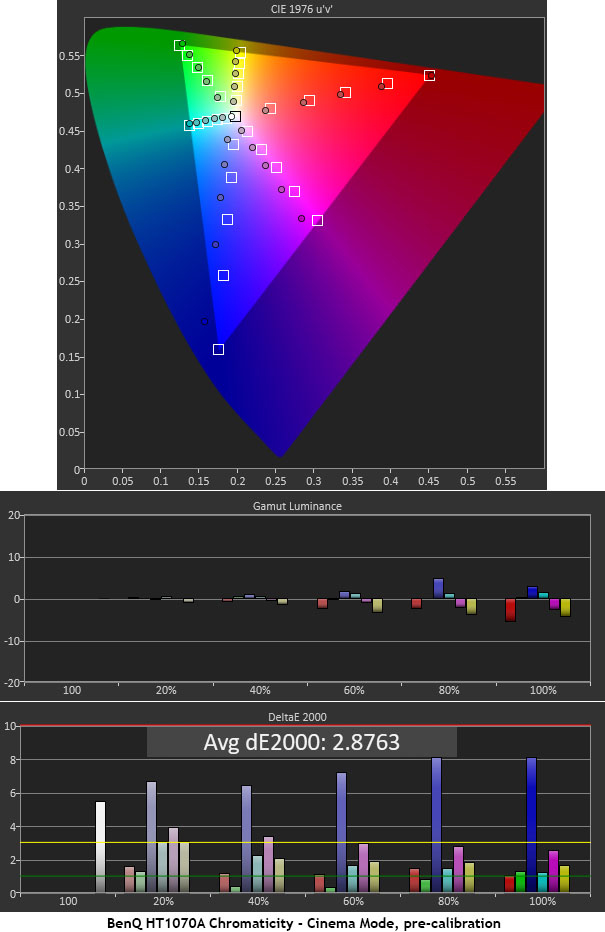
With an average of just 2.8763dE, color really doesn’t need any work in the HT1070A’s CMS. My only complaint is the blue primary which is under-saturated and slightly off-hue. It’s hard to see in actual content but some scenes featuring blue sky look slightly chalky and lack that last bit of brilliance. The problem is all but invisible in any other kind of material. The other five colors have no visible errors and track their targets to near-perfection.
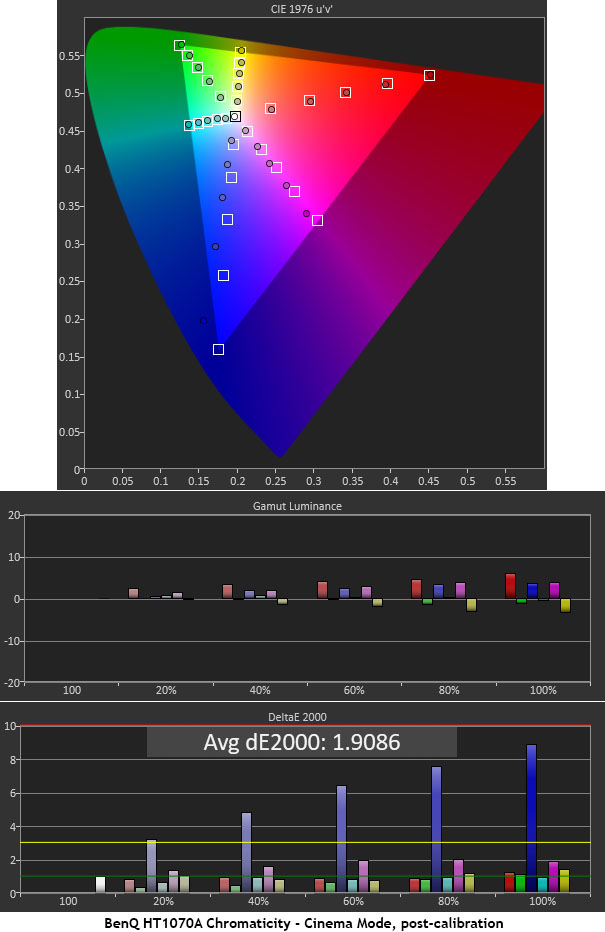
You can see the positive effect of my grayscale calibration. Now, the average error is just 1.9086dE. And it would be under 1dE if the blue primary were closer to its targets. That anomaly affects the magenta secondary which is just a bit under-saturated as well. Luminance retains an almost-ideal balance which keeps color looking natural and vibrant. If you want more punch, turn on Brilliant Color. But some hues might look a little off depending on your personal preference. These slight errors didn’t impact my enjoyment of the HT1070A at all.

The HT1070A failed the one-pixel burst and plate tests in 4:2:2 mode but had no visible roll-off with 4:4:4 or RGB formats. The projector will not pass below-black or above-white information regardless of the HDMI Range setting unless you provide a PC signal. This doesn’t affect image quality but it may make calibration more difficult depending on your technique for setting levels. I use a 0-10 step pattern rather than a PLUGE, which shows BTB information. I’d rather maximize a display’s dynamic range by clipping the signals below 16 and above 235 since that information shouldn’t be, and is almost never, present in properly-encoded content.
The HT1070A offers plenty of output, even in its Economic bulb mode. After calibrating the Cinema preset, I measured 33.6525fL peak, .0354fL black, and 949.5:1 contrast. The Normal bulb setting produces 51.641fL peak, .0541fL black, and 953.7 contrast.
To maximize image depth, I recommend the SmartEco mode which throttles the lamp’s output according to content. There is no penalty for using it as I observed no brightness pumping or other artifacts. There, I measured 50.5484fL peak, .0332fL black, and 1520.9:1 contrast.
If you want maximum output, for a media room with some ambient light for example, the Bright mode offers a generous 122.1164fL peak, .0604fL black, and 2020.4:1 contrast. You’ll also see green-tinted whites and a generally flat-looking image thanks to the color errors. But it competes well with most ambient lighting short of a sunny window.
In 3D mode, with the bulb on SmartEco, I measured 6.3238fL peak, .0284fL black, and 222.8:1 contrast. This is right on the edge for me. Any dimmer and 3D wouldn’t be much fun. But with the HT1070A’s extremely-low .02% crosstalk measurement and excellent motion processing, the 3D effect is superb with lots of depth and sharp detail.

THE HT1070A 3D DLP PROJECTOR continues BenQ’s tradition of offering more for the money than anyone else. Image quality is far beyond what its $649 price tag would suggest.
- Clear, sharp image
- Excellent color quality
- Easy to install
- Compact chassis
- Unparalleled value
- A bit more blue saturation
- Lens shift (yes, I know it costs $649)
- Backlit remote
No one likes to be predictable, right? When a brand’s reputation is at stake however, predictability is gold. BenQ has that without question. With so many positive reviews of its products under my belt, I’m completely certain that everything they send my way will be excellent. The HT1070A 3D DLP Projector simply continues that tradition.
For $649, less than the price of many 50” flat-panel TVs, you get a clear bright picture that can be projected up to 300” diagonal. Motion processing and color accuracy goes far beyond most big-box-store displays as well. Though there are gains to be found with calibration, the HT1070A can easily be enjoyed right out of the box. Cinema mode delivers precision while Bright offers lots of output should you find yourself competing with ambient light.
Versatility is another feature that sets projectors apart and the HT1070A has it. There’s enough zoom range to make it an easy install on a table or hung from the ceiling. You can take it with you for quick deployment or make the centerpiece of a budget home theater. The money saved means you can invest more in the audio side. Or perhaps it can help to increase the spouse acceptance factor.
Whatever you plan to use a projector for, the BenQ HT1070A should have little trouble satisfying a large majority of buyers. It offers the image fidelity and build quality of a much more expensive display and even beats them out in a few areas. If your budget won’t allow for a high-end model, I encourage you to add it to your short list. Highly Recommended.


